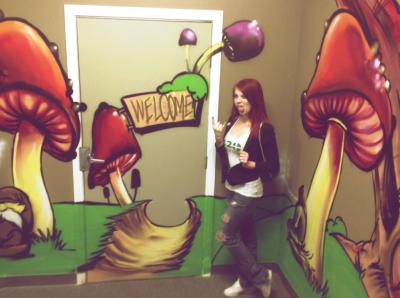
An unusual item among our many different food sources, the mushroom is a fungus, not a plant. This means that it grows from a spore, usually in the dirt or on decaying plant material, such as a log. While some varieties contain vitamins and nutrients, mushrooms are mainly used to give an earthy flavor and meaty texture to everything from pizza to risotto.
Some mushrooms, however, are famous for more than their taste. Known as magic mushrooms, shrooms, mushies, psychedelic mushrooms, psychotropic mushrooms or psilocybin, these mushrooms cause differences in mood, perception and behavior that are commonly known as "tripping."

These types of mushrooms belong to the genus Psilocybe. Mushrooms of other genera can also cause hallucinations, but many purists insist that Psilocybe mushrooms are the "true" magic mushrooms. Psilocybe mushrooms cause hallucinations because they contain the psychotropic tryptamines psilocybin and psilocin (some species also contain other, weaker psychotropic compounds like baeocystin or norbaeocystin). A single mushroom contains anywhere from 0.2 to 0.4 percent psilocybin.
Magic mushrooms are one of the most widely used recreational psychotropic drugs because they can be found in the wild or grown fairly easily and inexpensively. According to the 2003 National Survey on Drug Use and Health, about 8 percent of adults over the age of 26 in the United States have used magic mushrooms [source: Substance Abuse & Mental Health Services Administration].

Unlike manufactured psychotropic drugs such as LSD, magic mushrooms have a long history dating back thousands of years as part of religious or spiritual ceremonies. However, magic mushrooms also have a lot in common with LSD. Let's start with looking at how eating them can affect people.

Please checkout howstuffworks.com for more info
Be the first person to like this.


